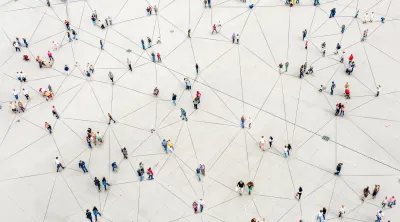How data and artificial intelligence can make healthcare more proactive

Your personal doctor keeps an electronic medical record. The lab where you have your blood work done keeps an electronic record of your results. Your current health insurer has your latest claims data; your previous health insurer has another set. If you go to the emergency room, the hospital maintains data about that visit. What if someone put together all the pieces?
Ashok Chennuru, chief data and insights officer with Anthem Blue Cross and Blue Shield, says it’s becoming more of a reality. And connecting this data will help head off health problems before they get worse. In this discussion, Chennuru describes how sharing data, machine learning, and growing cooperation among health organizations keep the focus on the patient, not the systems.
Kristin Gourlay: Here are some hypotheticals: If I go to the emergency room, I’d like my primary care doctor to know about it so she can check in and help me with any follow up. I’d like her to be able to look up my health insurance benefits before she prescribes medication to make sure it’s covered. All of that data exists, but to what extent are health care organizations sharing it?
Ashok Chennuru: The first bit of good news is that the majority of healthcare organizations now have electronic medical records. The second is that more and more healthcare providers and health insurers are interacting. They are sharing data. The interfaces are evolving to make that sharing even easier. And we have the infrastructure in place to handle greater complexity. The next step is to use all of this data to deliver data-driven insights and make healthcare more proactive and personalized, helping patients and their doctors make the best decisions for their health.
Gourlay: You can use that data to help a particular patient, such as a reminder to have a colon cancer screening if you haven’t seen a claim for that in a while. But the tools for tracking larger trends and relationships between data are evolving, including artificial intelligence (AI). Can you describe what that is, and how it might help healthcare organizations derive useful information, information they can act on?
Ashok: AI is combination of machine learning and software that mimics human cognition in terms of how you analyze and comprehend information. The more data you present, the more it learns. We have rich historical claims data—records of procedures or doctor visits or medications, for example—that doctors have submitted to us for payment. We’re now receiving medical records data, such as lab results or health risk assessments. As we synthesize all this data from millions of records, we can make predictions based on what has happened with other patients. For example, based on huge amounts of deidentified data such as hospital visits and lab results, we might be able to predict who is at risk of developing diabetes two years from now. We can reach out to those members and offer programs that help prevent or manage chronic disease.
We are now able make relatively accurate predictions regarding the risk of falling among older adults, and make treatment recommendations to help avoid those falls.
– Ashok Chennuru
Here’s another example. We are now able make relatively accurate predictions regarding the risk of falling among older adults, and make treatment recommendations to help avoid those falls. For example, we noticed in our claims data that many people who fell and ended up in the hospital had fallen because they were trying to clip their toenails. Once someone has fallen and been admitted to the hospital, their chance of falling again goes up dramatically. Now we know one way to prevent some falls: we let healthcare providers or case managers know that offering to clip toenails can help prevent falls and, therefore, hospital visits.
Something as seemingly small as clipping toenails showed up in the data—data individual doctors didn’t have or larger patterns providers could not see. But because we’re able to synthesize that data and see the bigger picture, we can help them make a huge difference in terms of keeping people out of the hospital.
Gourlay: What’s next when it comes to data sharing, or interoperability, and AI? You gave some great examples of how synthesizing this data and teaching machines and software to learn how to recognize meaningful trends can help prevent or manage chronic disease, or spot the risk for other problems. How else might we use these technologies to keep people healthy?
Ashok: This is something we are passionate about at Anthem: leveraging digital technologies and data to better serve our members. For example, if a member calls customer service to ask about their benefits, we can have the information at our fingertips to know they’re due for a lifesaving cancer screening, or ask about any other needs we can help them meet, such as transportation to a doctor appointment or access to healthy food.
As a lifetime health partner and digital-first organization, we are combining health data with information other important drivers of health, like food insecurity, ZIP code, and other factors, to help improve lives and communities. The goal is to make sure all of this data and information can be synthesized and give us insights that can be acted on. The more we understand about what affects a member’s health, the more we can make healthcare proactive, predictive, and personalized.
Anthem Blue Cross and Blue Shield is an independent licensee of the Blue Cross Blue Shield Association, an association of independent, locally operated Blue Cross and Blue Shield companies.
